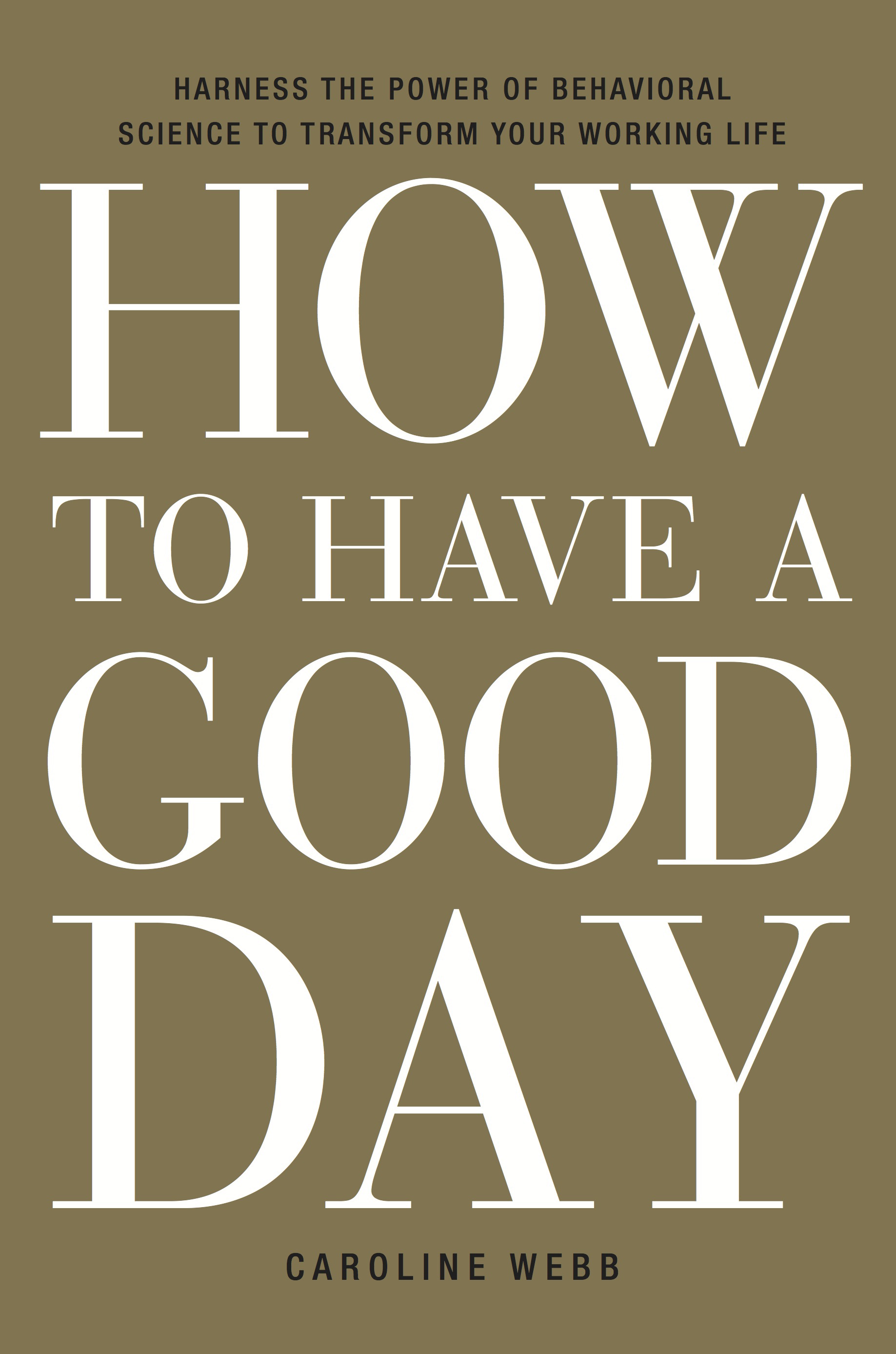How to Have a Good Day: Harness the Power of Behavioral Science to Transform Your Working Life
February 17, 2016
Caroline Webb shows readers how to use recent discoveries in behavioral economics, psychology, and neuroscience to transform our every day.

One of the benefits to being on the editorial staff at 800-CEO-READ, of being one of the people responsible for identifying which business titles rise above, is that reading and reviewing and recommending books inherently leads to my own development. But to qualify that, it only helps me grow if I let it, if I know how to accept and implement the troves of wisdom that really smart people spend a great deal of time putting into their books. It’s not easy.
What is easy, or easier, is examining a book ideologically, or on its merits, applicability, and quality of writing. I often finish a book and think enthusiastically that you—you being In the Books readers and 800-CEO-READ fans—need to read the book I just littered with post-it notes. But my job demands that I move on to the next book despite how much the previous book inspired me.
Sometimes I pick up that next book because the topic interests me. Other times I recognize an author I know and like. And yes, I’m a sucker for a good cover and an even bigger sucker for a creative title. There are other times, though, that I pick up a book because the publisher or outside PR firm folks did a masterful job positioning the book. In this case, “How to Have a Good Day is the book so many people wanted when they finished Nudge, Blink, and Thinking Fast and Slow.”
Yes. Me. Please times ten. I love those books. What did I do to implement those books’ ideas? [crickets]. Why? There are a myriad of reasons, but a lot of them boil down to structure, self-awareness, time and energy, and determination.
Caroline Webb’s new book is for me, and I really want you to read it.
Webb is a former McKinsey partner and current management consultant/executive coach with a deep and profound interest in behavioral economics, psychology, and neuroscience, the three scientific disciplines pulled from in How to Have a Good Day. With a keen eye and ear on the reader who may get overwhelmed, or quite frankly bored, by scientific research and data, Webb writes with clarity as she pulls from the research and supports the data with company anecdotes and personal stories. But what kept me reading was how self-aware Webb is in writing what is basically a personal productivity book. It’s more than just a personal productivity book, and people like me are skeptical of just personal productivity books. Webb’s self-awareness in writing is intrinsic to her message. Put another way, Webb used her message in the process of writing a book about her message.
In introducing a technique for helping “stay true to your good intentions as you tackle the most important or elusive of your priorities” called Mental Contrasting, Webb interjects:
(Perhaps some of you have been itching for this, after all the Pollyanna positivity.)
A well-placed joke goes a long way and by inserting this one, small bit of self-awareness, Webb reframed for me the entire experience of reading a book designed to make me better at work and life. Because aren’t we all at least a little cynical, a corner of our consciousness perpetually devoted to positivity aversion?
On a more substantive note, the true value of How to Have a Good Day is twofold: awareness and action. How do we help ourselves understand what is actually in front of us rather than blindly assume what we think and tell ourselves is real? And once we’ve instructively reframed our situations, how do we take steps to improve our intentions, our actions, interactions, and underlying behavior?
In the chapter titled “Making Wise Decisions” Webb writes:
Why are we so unwilling to let go of what we have? The reason seems rooted in our loss aversion, the fact that losses loom larger in our minds than gains of the same size. You might be excited about being given a nice office; if it’s taken away from you once you have it, studies suggest that your disappointment will outstrip your original excitement. So it’s important for us to know that when we’re making decisions, we—and others—will instinctively tend to overvalue the status quo compared with new options, unless we stop to think properly about how splendid the unfamiliar thing might really be.
Webb then lays out five cross-check rules designed to address not only what the quote above gets at, but also phenomena like groupthink and anything else our subconscious—which in the book is referred to as our “automatic system”—decides for us. Basically, because an incredible amount of our communication and decisions are driven by our automatic system, like macros for the brain, we must be incessantly diligent about challenging what and how our subconscious is deciding. We do that by instituting rules like “Mandate Dissent” and “Don’t Default.” This is hard. It takes constant self-awareness. But it is only hard because constant self-awareness is not natural to us and because it is not a practice we are taught from the beginning. Constant self-awareness is antithetical to second-nature and learned behavior.
How to Have a Good Day strives to make self-awareness, constant self-awareness, not so hard. Each section of every chapter always starts with the research (and what a joy it was to read about the actual studies referenced throughout the book), then gives you a game plan for addressing the research, and finally proceeds to give you tools to take your own self-discovery beyond such thought-provoking books as Thinking, Fast and Slow into successful personal implementation.


